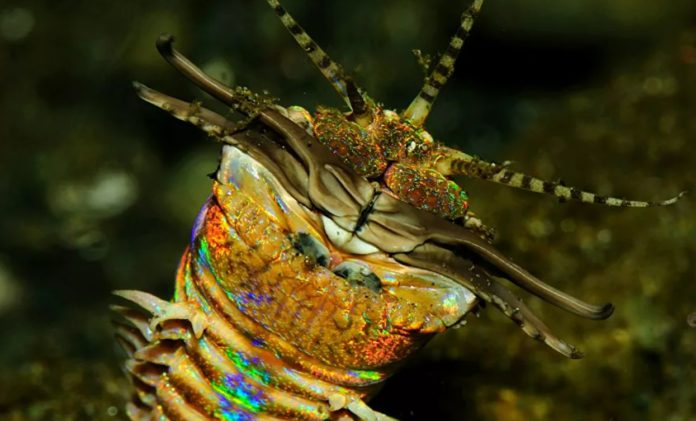An international team of paleontologists has discovered near the northeast coast of the island of Taiwan the trace fossils of huge predatory worms dating back some 20 million years.
During the study, researchers analyzed the sediments on the seabed for the flora and fauna of the Miocene era (from 21 to 5.3 million years ago). They then created a computer simulation of a trace fossil — indirect traces of activity—of this mysterious prehistoric animal based on 319 well-preserved evidence. The study authors suggest that predatory worms might have inhabited the area about 20 million years ago.
- Brief Anger Hampers Blood Vessel Function Leading to Increased Risk of Heart Disease and Stroke – New Study
- New Blood Test Pinpoints Future Stroke Risk – Study Identifies Inflammatory Molecules as Key Biomarker
- Enceladus: A Potential Haven for Extraterrestrial Life in its Hidden Ocean Depths
- New Experiment: Dark Matter Is Not As ‘DARK’ As All We Think
- Scientists in Fear of This New Predator From Red Sea Eating Native Species in Mediterranean
The fossil track of prehistoric worms—which scientists have dubbed Pennichnus formosae—consists of several L-shaped burrows approximately two meters long and two to three centimeters in diameter. They could have belonged to the ancestors of Bobbit predatory worms that are still found today and can be up to three meters long.
Like their modern descendants, the voracious prehistoric worms hid in the sand and attacked their prey from near-vertical burrows located on the seabed and grabbed them with their strong jaws.
Paleontologists explained that the bodies of seaworms are mainly made up of soft tissue and this is the main reason they are almost never preserved.
But why are the authors of the study convinced that these are the burrows of worms and not other marine animals?
The upper parts of the galleries show high iron content. This suggests that the animal that created the tunnels was oozing a viscous substance to fortify the walls of the structure, just as the Bobbits do. This substance, in turn, attracts bacteria that form an iron-rich environment. Another indication of the tenants of these burrows were their external forms, characteristic of Bobbit worms.
- Brief Anger Hampers Blood Vessel Function Leading to Increased Risk of Heart Disease and Stroke – New Study
- New Blood Test Pinpoints Future Stroke Risk – Study Identifies Inflammatory Molecules as Key Biomarker
- Enceladus: A Potential Haven for Extraterrestrial Life in its Hidden Ocean Depths
- New Experiment: Dark Matter Is Not As ‘DARK’ As All We Think
- Scientists in Fear of This New Predator From Red Sea Eating Native Species in Mediterranean
The researchers say that the finding “provides a rare view of the behavior of these creatures under the seabed. It also highlights the usefulness of the study of fossil traces to understand the behavior of past organisms.”
